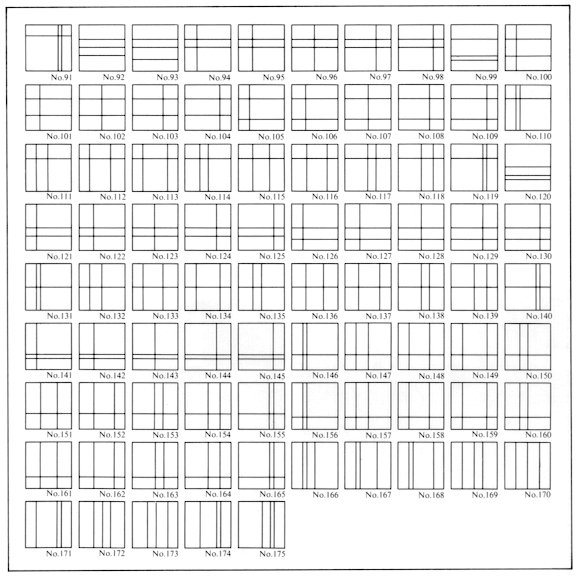First, when we examine the number of the ways of
arranging two horizontal lines, there are ten kinds because it is a combination
for selecting two lines out of the five lines is 5C2 (this is the same
to the case where two vertical lines are selected). When one vertical and
one horizontal line is selected, there are 25 possibilities ( 5C1
× 5C2 = 25 ). As in the above, the total number
will be 45 (10+10+25 = 45) when two lines are used.
The number of the division using three lines is calculated
as follows; three horizontal lines,
5C3=10, three
vertical lines, 5C3=10, two horizontal lines and
one vertical line, 5C2 × 5C2=50,
and one horizontal line and two vertical lines, 5C1
× 5C2=50. The above total number of 120 is
the total number of the division using three lines. In the same way, we
can sum up the total number by adding these combinations for the case of
using four lines one by one. Since all of the resulting numbers are too
numerous to supply, only the examples using three dividing lines are illustrated
here. We were surprised that so many divisions were made by defining these
small dividing points.

197-b
|
|
NEXT
CONTENTS
|